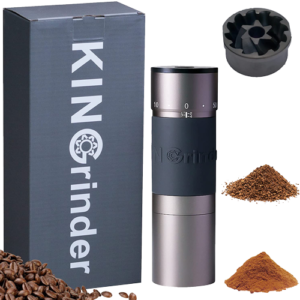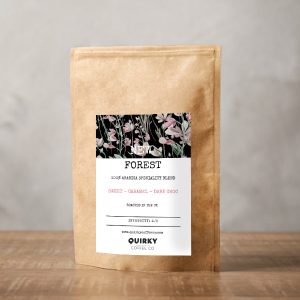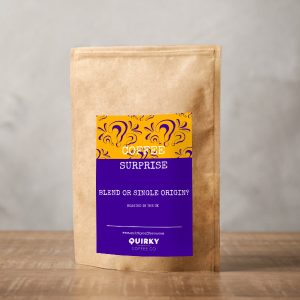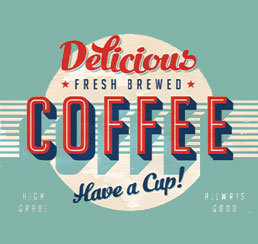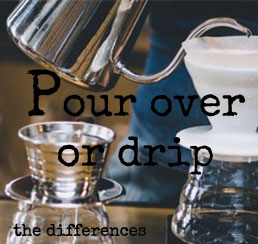Find out how to brew your favourite coffee best in a cafetière. Not sure what type of coffee to buy for your cafetière? All you need to know is right here.
Buy and brew the best coffee in a cafetière
There’s nothing better than a good cup of coffee to start your day. Coffee is one drink enjoyed worldwide that can boost your concentration and give you the energy to complete your work.
There are even many studies that have indicated how much coffee benefits the body,
Aside from waking your mind and body up every morning, every cup of coffee contains nutrients such as Magnesium, Riboflavin, Niacin, Potassium, Manganese and Pantothenic acid. All these nutrients help improve your body’s overall health and function.
However, when it comes to making a fantastic cup of coffee, it takes a certain amount of skill to do so. As a result, in this article, we will now look at how you can find and brew the best cafetiere coffee.
What is a cafetière?
Read on to find out the history of the cafetiere, how a cafetière works and much more…
Cafetière history
Cafetière is the French word for the coffee pot, also known as French press coffee. Its creation dates back to the 1920s in France, where French press coffee was made by attaching a metal or cheesecloth screen to a rod which was then plunged into boiling water to filter the coffee. The original design of a cafetière was first patented by an Italian designer Attilio Calimani in 1929 but was later modified by another designer, Faliero Bondanini and patented again in 1958.
Depending on your likes and preferences, there are many ways to brew coffee. Some people enjoy hand-made coffee made by baristas, while others prefer to use equipment such as an espresso machine or the filter method. One of the best ways to make coffee is using a cafetière, a French Press or a coffee press. It looks like a cylinder-shaped beaker that has a plunger.
This is one of the best cafetieres without a doubt.
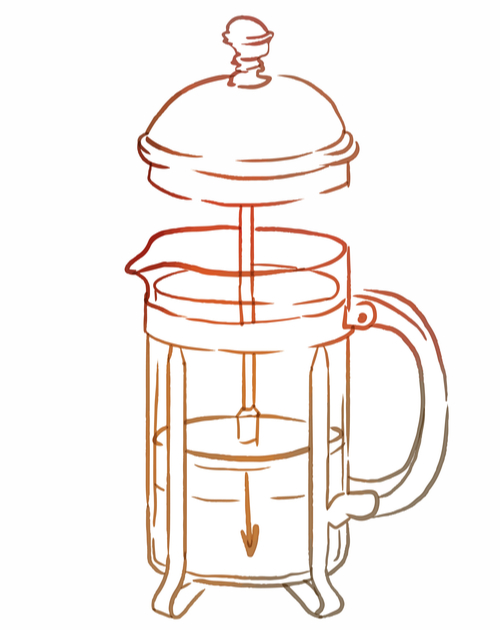
How does a coffee cafetiere work?
The beaker can be made from plastic, glass or even steel. The plunger or piston aspect is usually made of a mesh-type material that allows the liquid coffee to pass through while separating the coffee grounds from the liquid.
The difference between using a cafetière and other coffee-making machines is that in most other brewing methods, the grind size of the beans affects how water flows in and through the coffee. This then affects brewing time. However, with a cafetière, the size of the grind and the brew time and yield are not dependent on each other. You can make as little or as much coffee as you desire when using the cafetière. It is possible to grind the coffee in whatever way you want, and the brewing process can also be stopped whenever you wish.
Now, with that said, we will look at some rules to follow when brewing coffee using a cafetière.
Know your beans! Use fresh! Grinding and storing!
Have a good knowledge of your coffee beans
You must have an excellent working knowledge of the coffee beans you intend to use, and you should at least know their country of origin to achieve the perfect cafetiere coffee. This is important because the coffee from different countries has different flavours. Experienced coffee drinkers will immediately know the difference in the coffee, so you should be well acquainted with the flavours of your coffee beans.
For the most part, the label of the coffee beans will contain the country of origin, so if you’re not familiar with which country the coffee beans originate from and their flavours, you should buy as many coffee beans from various countries and test them out to see which ones you enjoy the most. One of our all-time favourites is our creamy Columbian La Laguna coffee, which has a rounded body.
What kind of coffee goes in a cafetière
To some, coffee is just ‘coffee’. To the coffee aficionados amongst us, there is more to coffee than it is, ‘just coffee’. The type of coffee that you should put into a cafetiere is quality coffee!
Simply put, the type of coffee that needs to go into a cafetière is roasted ground coffee – the fresher, the better. You do not put instant coffee in a cafetière. Instant coffee is freeze-dried, designed to dissolve in hot water that you pour onto it – all you need for this is a mug!
Freshly ground-roasted coffee can be purchased from supermarkets and independent stores. Still, the best freshly roasted coffee will always come directly from coffee roasters and make the best freshly brewed coffee.
Should you purchase Arabica or Robusta?
Robusta beans are a cheaper alternative to Arabica coffee beans; it is best to stick to buying 100% coffee beans. Also, Robusta beans have a much harsher flavour and bitterness. See our selection of speciality, single-origin Arabica coffee in our online shop, available for a monthly subscription or single purchase to achieve that perfect cup of coffee.
Use fresh coffee
Next, you should always use fresh coffee beans when making coffee because the best coffee is typically made from beans that have been recently roasted. Always ensure you have the freshest beans by purchasing the beans from a locally sourced roaster, like us, The Quirky Coffee Company. You should avoid buying your coffee in bulk from supermarkets or stocking up since the beans will lose their flavour with time.
Also, the more light and oxygen the beans are exposed to, the more their flavour will reduce. Most supermarkets don’t properly store their coffee, and in many cases, the beans turn rancid before purchase. So, you should be careful to buy your coffee beans from people who take pride in selling the freshest roasted beans, and they should be packaged in an airtight bag with a valve.
Can speciality coffee go into a cafetiere?
Yes, yes… YES! Speciality coffee is the best that money can buy. Speciality coffee is coffee that is graded by The Speciality Coffee Association (SCAA).
All of our coffees available in our shop are SCA graded, and whether it is one of our single origins or our bespoke blends, the SCAA has given every single bean the seal of approval.
Many of the coffees available on supermarket shelves are not SCAA graded. We are not saying that you don’t like the taste; however, once you have brewed and tasted speciality coffee, you will almost certainly never go back to many of the brands that you once thought were delicious that you use in your coffee machines or cafetieres.
Choosing Great Coffee
Speciality coffee is one of the drinks where there is no shortage of know-it-alls, similar to wine drinkers. You should always aim to buy the best coffee, not to become a know-it-all yourself, but to enjoy and share the best coffee possible. As a result, you should take some time to find authentic coffee sellers that are not the commercially available brands that are marketed to the masses. Instead, look at quality coffees that provide unique tastes according to the region or country it was grown in.
Storing your coffee beans
Once you’ve purchased your coffee beans, you should store them well. All of our coffee comes in a resealable valved bag. You should never place your beans in the refrigerator since the beans are porous and will absorb the flavour and smells of other foods and items.
When you need coffee, you should only buy amounts that you know you will use while still fresh. They should be stored at room temperature in a clean area. Why not try our coffee subscription service and save 10%? You will receive your Quirky Coffee every month without worrying about being with your favourite brew!
Can you use coffee beans in a cafetière?
This may seem silly for us to answer, but not everyone knows about brewing fresh coffee. Yes, this is a question that we have been asked! Coffee starts its life as a cherry.
There are various processes by which the ripe cherry continues its journey to your cup. In summary – the coffee cherry is picked, washed and then exported around the world to be roasted by coffee roasters.
You can buy coffee as a whole bean or pre-ground for your brew method. If you purchase whole-bean coffee, you will also need a coffee grinder to grind your coffee beans before brewing.
We would always recommend using a burr grinder like this Shardor one when grinding your freshly roasted coffee beans – a little more expensive than most grinders but worth it for a great-tasting cup of cafetiere coffee.
So, no, you cannot use whole coffee beans in a cafetière or any other brewing method. However, if you are lucky enough to have a bean-to-cup espresso machine at home, you would use whole coffee beans to pour into your hopper, and the bean-to-cup machine does the rest for you.
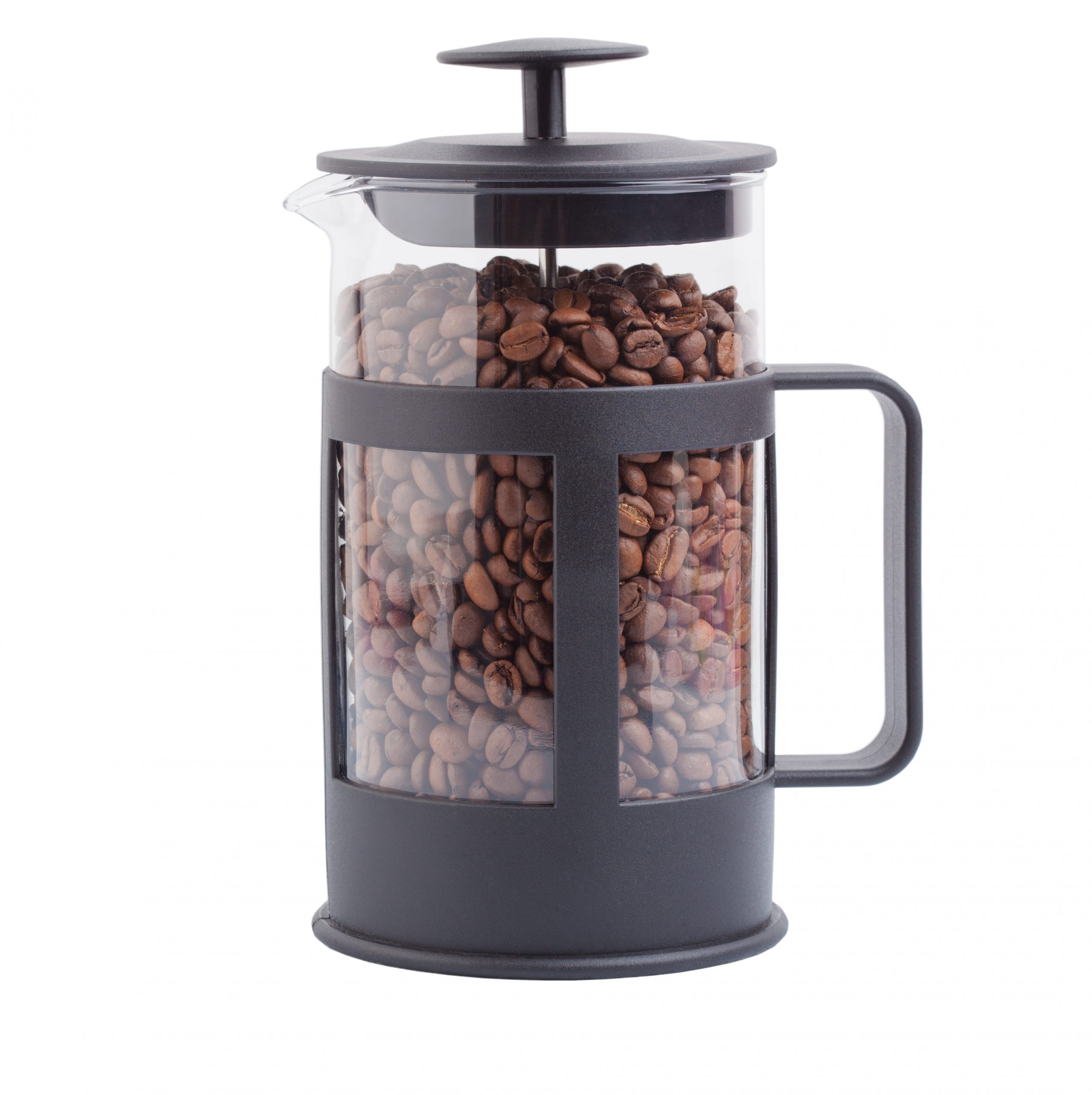
Grinding your coffee beans
There are many different ways to grind your coffee beans and you can choose from commercial and mechanical grinders or you can look into the more pricey burr mills (the best kind in our opinion). It is important to note that the finer the grind particles, the more flavour you will get from the coffee whilst always making sure the correct grind is used for your brewing method.
Getting a good grind is imperative for a great tasting freshly brewed cafetière coffee. For brewing in a cafetière, we would recommend that you grind your coffee to a medium coarse.
How much coffee should I put in a cafetiere?
A cafetière (also known as a French Press) is available to buy in a variety of sizes. It will usually state how many ‘cups’ you would expect to be able to fill but of course, this would depend on how big your cup is! The most common size of cafetière is an 8-cup capacity. The reference to ‘cup’ is the size of a small espresso cup so if you are using mugs an 8-cup cafetière would give a yield of 3 servings.
An 8-cup cafetière requires 55 – 60g of coarsely ground coffee.
You have ground your freshly roasted speciality coffee so it is now time to start the brewing process in your cafetière or French Press.
Water for your brew
Of course and extremely obvious, you will need to use water when making your coffee. However, for best results, you should ensure that your tap water is filtered. Water fresh out of the tap will not taste as good and has a high chemical content which will not give you the best results that you can achieve. You should avoid using distilled water or soft water to make your coffee since, in our opinion, will ruin the taste.
You can also brew your coffee with bottled spring water but make sure that the mineral content is between 50 to 150 parts per million, this level will give you the best-tasting water without being either too hard or too soft for coffee brewing.
Bring the freshwater to boil and let it stand for around 30 seconds to 1 minute, until just under boiling point.
For an 8-cup cafetière use 850ml of the just-off-the-boil water.
Preparation of your cafetière
Pre-heat your cafetière with some of your freshly boiled water and give it a good swirl before pouring it away. This gives the foundation for a perfect brew.
How long should you leave coffee in a cafetière?
- We would recommend an overall brew time of 4 minutes.
- Pour some of your just-off-the-boiling water over the coffee to saturate your ground coffee. Then take your time to slowly pour in the rest of the measured water (850ml for an 8-cup cafetière).
- To make sure that the ground coffee has no dry pockets at the bottom of your cafetière give it a stir, pop the lid on the top of your cafetière (do not plunge) and then start your 4-minute timer. The reason for leaving the lid on is so that heat does not escape.
The term used for your coffee now brewing in your cafetière is steeping. Stepping, immersion brewing, is the simplest way to brew coffee. The steeping process is when the coffee flavours are being extracted.
Steeping: to soak (food or tea) in water or other liquid so as to extract its flavour or to soften it
- Once your 4-minute timer has sounded it is then time to plunge!
- Firstly however we would recommend that you take a spoon and carefully skim the crema from the top of your brewed cafetière coffee. The crema is a combination of natural fat/oil from the coffee bean. By skimming this from the top of your brew will prevent over-extraction and the unpleasant bitterness ensuring you have the best possible cup of coffee.
- 4 minutes have expired, grounds have been skimmed and now it is time for the slow and controlled plunge. Take your time and push the top of the cafetière steadily to the base of the glass or plastic beaker.
Time to enjoy!
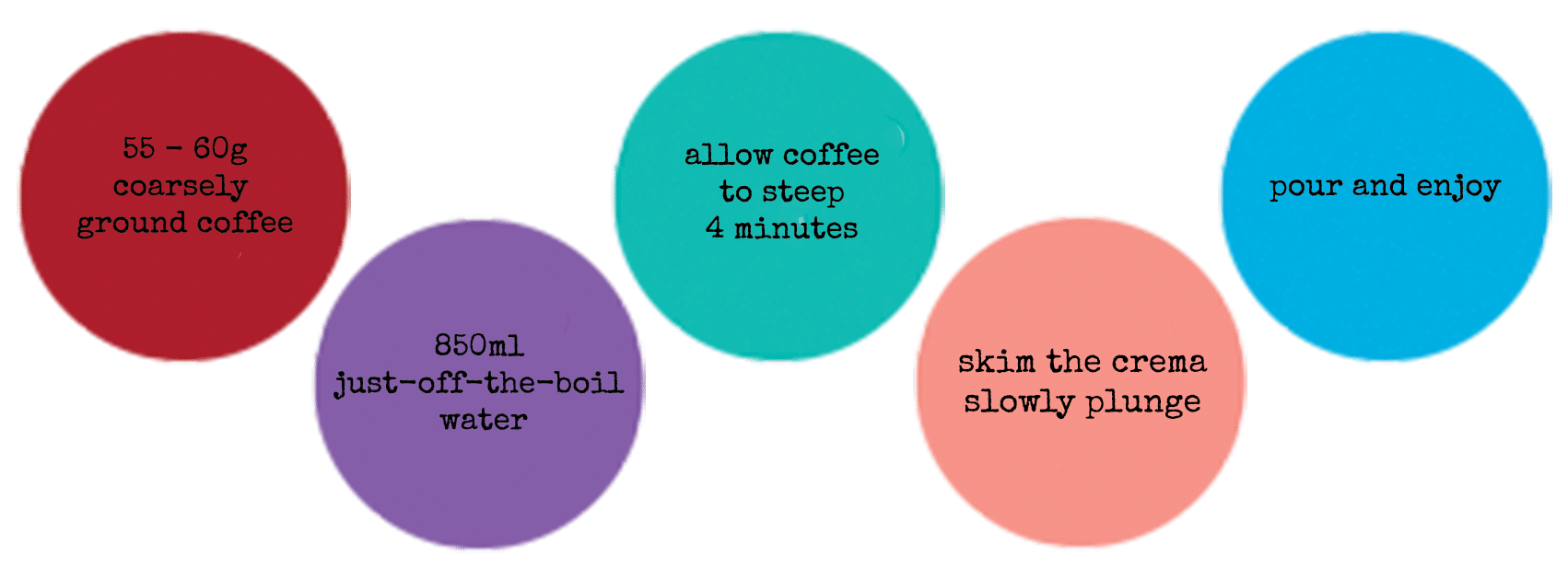
8-cup cafetière, adjust for other sizes
More tips about brewing your speciality coffee
Don’t use cheap filters for other brewing methods
Many coffee experts have concluded that the cheap coffee filters found in most supermarkets also ruin good coffee. Whether you are purchasing paper filters or a re-useable paperless filter, you should always look for oxygen-bleached or dioxide-free paper ones.
If you want to have a long-lasting filter that is re-useable time and time again, then try a stainless steel coffee filter which is the type of filter in a cafetière. This type of filter, a mesh layer, allows your coffee to escape slowly.
These filters are long-lasting, and they also help to create fantastic-tasting coffee. However, if your coffee is very finely ground, then there is a chance that some sediment may find its way into your coffee. This can make it taste much better if you enjoy rich flavours.
Don’t skimp
Lastly, one of the worst things you can do when using a cafetière is to skimp on the coffee by using more water and less coffee. This will ruin your brew and make it bitter. An excellent standard measure is 3 – 4 tablespoons of coffee for an 8-ounce cup or 2 tablespoons for a 6-ounce cup.
Conclusion
In closing, our blog has looked at just a few tips and guidelines on finding and brewing the best coffee possible in a cafetière. Implementing the above tips to improve your coffee-making skills and become a true coffee connoisseur is best.
Please have a look at our premium artisan coffee in our shop, you’ll love the Quirky Coffee taste.


